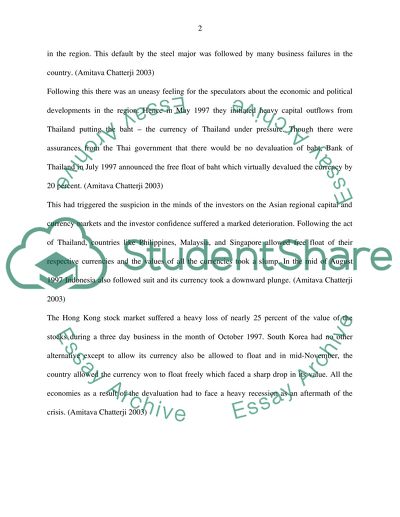Cite this document
(“Assess competing theories of the causes of financial crisis against Essay - 1”, n.d.)
Assess competing theories of the causes of financial crisis against Essay - 1. Retrieved from https://studentshare.org/miscellaneous/1543816-assess-competing-theories-of-the-causes-of-financial-crisis-against-evidence-from-one-of-the-countries-impacted-by-the-asian-financial-crisis
Assess competing theories of the causes of financial crisis against Essay - 1. Retrieved from https://studentshare.org/miscellaneous/1543816-assess-competing-theories-of-the-causes-of-financial-crisis-against-evidence-from-one-of-the-countries-impacted-by-the-asian-financial-crisis
(Assess Competing Theories of the Causes of Financial Crisis Against Essay - 1)
Assess Competing Theories of the Causes of Financial Crisis Against Essay - 1. https://studentshare.org/miscellaneous/1543816-assess-competing-theories-of-the-causes-of-financial-crisis-against-evidence-from-one-of-the-countries-impacted-by-the-asian-financial-crisis.
Assess Competing Theories of the Causes of Financial Crisis Against Essay - 1. https://studentshare.org/miscellaneous/1543816-assess-competing-theories-of-the-causes-of-financial-crisis-against-evidence-from-one-of-the-countries-impacted-by-the-asian-financial-crisis.
“Assess Competing Theories of the Causes of Financial Crisis Against Essay - 1”, n.d. https://studentshare.org/miscellaneous/1543816-assess-competing-theories-of-the-causes-of-financial-crisis-against-evidence-from-one-of-the-countries-impacted-by-the-asian-financial-crisis.


